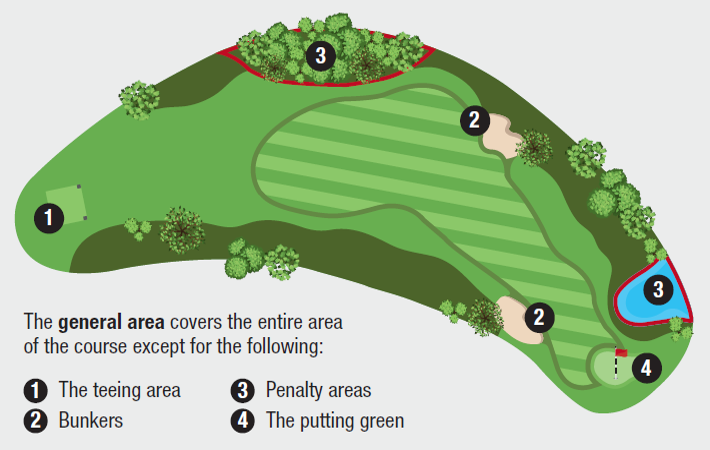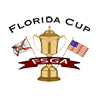The second Rule in the 2019 Rules of Golf is “The Course" and is one of the simpler Rules for 2019. The first part of the Rule just clarifies that the Committee sets the boundaries of the course The boundary is not necessarily the property boundaries or roads; however, the Committee may use roads, fences, white stakes, white lines, and other features to define the boundary of the course.
 The second part of the Rule defines the areas of the course. There are five areas of the course and it is important to know what part of the course your ball lies in so you may proceed properly.
The second part of the Rule defines the areas of the course. There are five areas of the course and it is important to know what part of the course your ball lies in so you may proceed properly.
- The Teeing Area (used to be call “teeing ground”) – The teeing area is the area within two club-lengths of the tee markers you are playing. The teeing area only includes the area on the hole your are currently on.
New for 2019 – Anytime your ball is in the teeing area you may tee the ball up anywhere within the teeing area. So, if you hit your tee shot and the ball deflects off a tree and bounces back inside the teeing area you may lift it, tee it up and make another stroke without any penalties. - All Bunkers – All bunkers on the course.
- All Penalty Areas (no longer called “hazards”) – May be marked red or yellow.
- The Putting Green – Only the putting green of the hole being played. All other putting greens are a “wrong greens” from which you must take relief if your ball lies on one.
- General Area (formerly call “through the green”) – Includes all areas of the course inside the boundaries that is not of the four areas listed above. The general area includes fairway, fringe, rough, other teeing grounds, etc.
The third part of the Rule is brief and just explains that there are objects on the course that can interfere with play like loose impediments, movable obstructions, and abnormal course conditions and that relief is free! An exception to this part is that there is no free relief from boundary objects. We will learn more on free relief in Rules 15 and 16.
The final part of the Rule covers “no play zones” and that the Committee may declare areas on course as a no play zone. Examples of typical no play zones can be environmental sensitive areas, flower beds, areas under repair, and turf nurseries. The Committee may declare areas as no play zones and whether or not they are penalty areas (no free relief) or abnormal course conditions (free relief).
As mentioned earlier, knowing what part of the course your ball lies on is very important because you are allowed to take certain actions in some areas which are prohibited in others. We will learn more on these areas of the course in later Rules.





